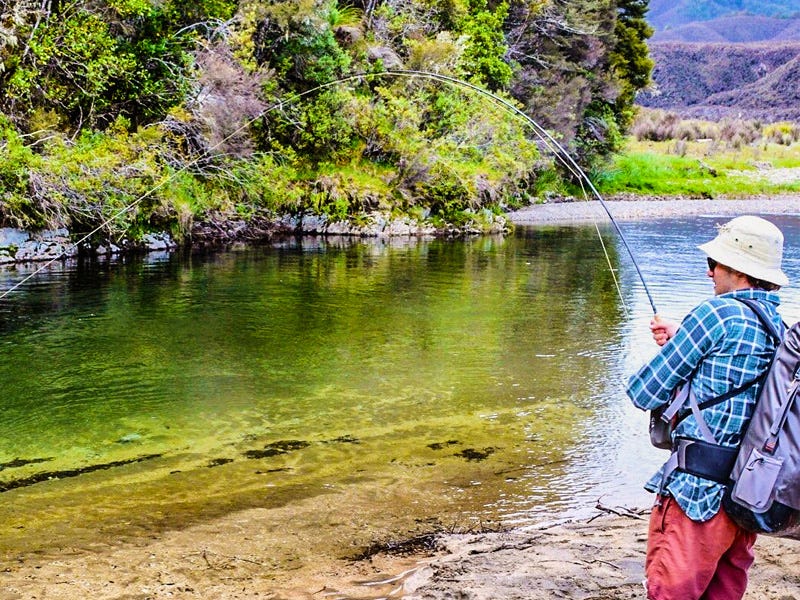Getting It Done in New Zealand: Fly Fishing for Browns

By Jack Gauld

The new season has just kicked off over here in New Zealand and it’s shaping up to be an absolute ripper! With the combination of a very mild winter and rather low rainfall, the trout have kept some serious condition. All reports from the South Island have been of happily feeding fish, in both the backcountry and the lowland rivers.
I’ve been busy doing plenty of exploration missions to both new water, and to my good old favorite rivers and streams on the North Island. Recently, I’ve been blown away by the average size of the fish that I’ve landed. I’ve found that most fish are one to two pounds heavier than this time last season.
Now, what does this mean? Well, if there’s one thing NZ trout hate more than being pricked in the face, it’s losing their condition. Almost every fish I’ve seen so far has been feeding hard. This is great news for anglers, who may be thinking about visiting NZ this season.

Less casting more spotting
Having grown up fly fishing on the upper South Island has helped me tremendously, with my ability to spot trout in their natural lies. For those of you who have not done much sight fishing or for those who seem to be blind casting, it’s time to slow down and have a look.
There’s no such thing as a river in New Zealand that is too hard to spot fish on (in the right conditions).

We have a funny saying in NZ which is, "10% of fisherman catch 90% of NZ trout!" I don’t personally think that. However, I do believe it’s not entirely wrong either. Of those 10%, I bet every single one of them takes their time spotting as many fish as they can before letting a single cast hit the water.
Why? If you can spot a trout in NZ before it spots you, your chances of catching that fish will increase greatly. Once you are able to see if the fish is feeding or not and see how deep the fish is in the water, you can adjust your tippet length and cast accordingly.
Still, the best bit of advice I can give to anyone fly fishing in NZ, is to make your first cast the best cast. If you do that, more often than not, you will catch trout regardless of your fly choice.
If the first cast isn’t the best, then your choice of fly becomes the next most important factor as to whether or not the fish will eat the fly or spook away. So, it pays to have a look under a few rocks and see what nymph life is about before you make the cast.

Getting NZ trout to look up!
During the first few months of the new season, it is unlikely to get many fish to look up and take your dry fly. This happens especially on the North Island, but that doesn’t mean you shouldn’t pack your dry fly away in a box until January.

I’ve found that in the right water (less than a meter deep), a big dry fly is simply the best fly for the job. And, let’s be honest, we would much rather see a trout come up and inappropriately expose itself while chomping a big stimulator, than watch it eat a small nymph drifting past. So, my advice is to start small with a size 14 dry.
If that does not get the trout’s attention, then change straight to a big size 8 stimulator and just let rip with a cast about 30 cm from the fish’s head. Why cast so close to the fish and increase the chance of spooking it? Well, from my personal experience, this gives the trout less time to make a decision. We all know how the story goes when we don’t have enough time to make a good decision!
You can follow my fly fishing adventures on Instagram @flyfishingkiwi or, for guided NZ fly fishing trips you can contact me via email at flyfishingkiwi@gmail.com; you can also get more stories like this in our North 40 Fly Shop eMag.
